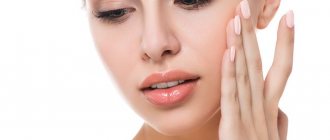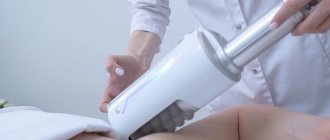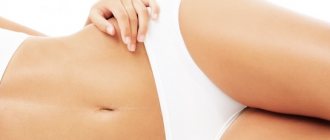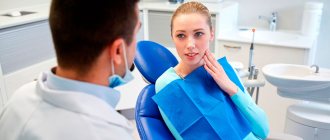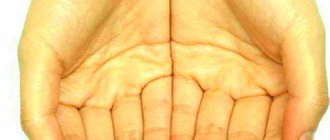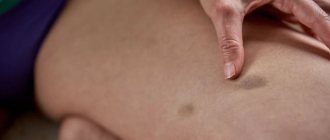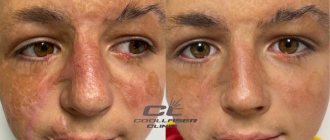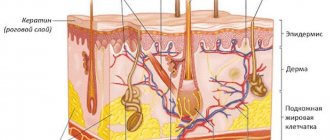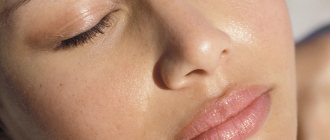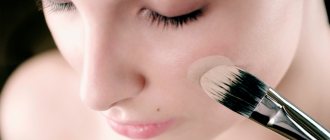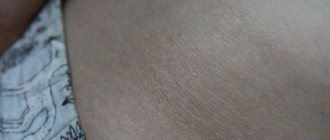Causes of roughness
Rough skin can occur in both adults and children. To understand how easily these skin manifestations can be eliminated, you should analyze the reasons for the changes that have occurred.
Firstly, skin type is determined genetically. The role of heredity in the appearance of rough skin is undeniable if such qualities are inherent in the skin from the very birth of a person. Love your face, because modern cosmetology methods allow you to eliminate unevenness and roughness.
It is possible to predict possible skin reactions to external procedures and cosmetics by compiling a so-called genetic skin passport.
Secondly, roughness and dryness of the skin in open areas can occur due to forced deprivation of moisture from the skin, for example:
- Under extreme weather environmental conditions. Low-temperature frosty weather, sharp winds, and scorching rays of the sun contribute to the drying out of the top layer of skin, causing dryness and flaking, which becomes a problem on our face.
- In case of improper skin care. Inadequate skin care, as well as excessive, too frequent use of cleansing cosmetics, can deprive the dermis of natural protection and cause roughness and peeling. A cosmetologist will tell you what to do in this case.
- When using low-quality cosmetics. The skin on your face may react with irritation and an allergic reaction to poor-quality chemical components of a cosmetic product for your skin type. Therefore, the selection of caring cosmetics must be treated with great attention.
Thirdly, the cause may be damage to the integrity of the skin. Even the most minor damage can cause not only roughness, but also death of the dermis. The skin, especially the face, should be carefully looked after. It is recommended to use a soft towel, and after washing, lightly pat your face, avoiding vigorous drying.
Fourthly, alcohol and smoking abuse. The face is a mirror of health, and changes caused by alcohol are difficult to compensate for with cosmetics. Alcoholic drinks have a diuretic effect, as the body, through increased work of the liver and kidneys, strives to quickly remove toxic waste products.
The liquid first leaves the subcutaneous tissue, so rough, flaky skin always accompanies a drinker. The barrier function of the epidermis is further reduced taking into account such an aggressive irritating factor as tobacco smoke.
My face looks like an orange peel: what should I do?
When “orange peel” appears, the question is how to remove unpleasant symptoms.
Many people try to disguise them using foundation. In fact, this tactic is highly undesirable, as it can lead to clogged pores and make the problem even worse.
If the skin on your face has become like an orange peel, you need to undergo a series of restorative cosmetic procedures as soon as possible. In this case, atraumatic facial cleansing, peeling and laser exposure are most effective.
Atraumatic facial cleansing
This procedure is a combination of soft dry cleaning and mechanical action. It allows you to eliminate acne, oily shine, inflammation, and activates regeneration processes.
Atraumatic facial cleansing has many advantages:
- visible result after the first session;
- no risk of skin damage;
- the ability to treat only problem areas.
The first stage of the procedure involves sequential application of masks with glycolic acid to the skin. However, since such an effect does not eliminate all impurities, it is combined with manual peeling.
At the end of the procedure, a mask is applied to help moisturize the skin and tighten pores. In total, the session lasts about half an hour.
Peelings
Peels allow you to get rid of enlarged pores, increased oiliness or excessive dryness of the skin, inflammatory processes and many other problems.
It is no coincidence that they are one of the most popular cosmetic procedures.
There are chemical, mechanical and hardware peels. The first are based on the influence of chemicals (usually acids), the second are based on manual application of drugs with active ingredients, and the third can be carried out using a laser or ultrasound.
Depending on the degree of impact, the following types of peeling are distinguished:
- surface;
- median;
- deep.
Maximum penetration into the skin layers allows for the most pronounced effect, but is accompanied by increased skin trauma. That is why such procedures should be carried out exclusively in the salon.
Laser
The effect of the laser also allows you to quickly eliminate the effect of orange peel on the face. This procedure is in great demand because it acts against a number of cosmetic defects:
- hyperpigmentation;
- wrinkles;
- striae;
- enlarged pores;
- acne and post-acne;
- rosacea;
- scars.
A positive result is noticeable after the first visit to the clinic, but usually experts recommend at least 2-3 sessions.
At Novoklinik, this procedure is carried out using a reliable Italian Synchro Play DEKA device equipped with a cooling system. The cosmetologist can regulate the depth of its effect, ensuring a pronounced result without unwanted side effects.
More about procedures
Jessner Peel
Laser rejuvenation
Atraumatic cleaning
Roughness and signs of disease
The above reasons can serve as a catalyst for dermatological diseases, which is indicated by your face. An insufficient amount of moisture in the upper layers of the epidermis can cause dryness and flaking also on the back and limbs.
Xerosis
If the skin has become rough and changed color, if peeling, itching, and cracks appear and persist for a long time, you should think that this is not a simple cosmetic defect. This condition can be caused by xerosis, a symptomatic manifestation of a skin disease that should only be treated by a specialist.
Xerosis is caused by a special physiological condition of the skin with insufficient function of the sebaceous glands, characteristic, for example, of women with thin white skin, as well as during menopause.
Atopy
Roughness can appear due to the use of chlorinated water, washing powders, soap and other more or less aggressive environments. This can cause a chronic disease such as atopic dermatitis, a type of eczema. It is typical for people with sensitive immune systems and hereditary predisposition.
Dermatitis is manifested by the following symptoms:
- Uneven rough skin, itching, dryness, rash.
- The reddish rash is localized in small areas of the skin of the face, neck, limbs, and also on the back.
- In the initial stage, the itching is insignificant, but dry skin is flaky and prone to cracks, which can later become infected.
Atopic dermatitis is especially common among young children and also occurs in adults.
Preventive measures include washing the body with non-chlorinated water (preferably boiled), using gloves when cleaning and washing, using moisturizing creams (Emolium) and lotions. In severe cases, medications prescribed by a doctor are used.
Systemic diseases
Problems with the endocrine and lymphatic systems can also cause changes in the skin and subcutaneous tissue. Decreased thyroid function, especially in severe hypothyroidism, causes mucinous edema (myxedema), most pronounced in connective tissue structures.
The patient experiences dry, rough and pale skin, swelling of the face and limbs, fragility and hair loss. In this case, consultation and treatment with an endocrinologist is necessary.
Avitaminosis
Roughness and roughness of the skin on the face may be a sign of vitamin deficiency, in particular, a lack of niacin (other names for vitamin B3 or PP). Niacin, or nicotinic acid, is the only vitamin that traditional medicine classifies as a medicine. A lack of niacin in the body can cause a disease called pellagra.
Niacin is easily absorbed in the body, but in case of digestive disorders, prolonged fasting, or poor nutrition, there is a deficiency of nicotinic acid or the amino acid tryptophan, which promotes the production of the vitamin.
The disease mainly affects adults. Pellagra is characterized by:
- Peeling and pigmentation of the skin under the influence of light, especially in spring and summer.
- Red spots appear on exposed parts of the body, the affected skin is swollen and itchy.
- Pityriasis-like peeling occurs, the skin of the face, hands, and also the skin on the neck becomes dry, reminiscent of parchment.
- Pellagritic erythema is characterized by dark brown pigmentation, in some cases white spots appear, similar to vitiligo.
Niacin is often called the vitamin of calm; if it is deficient in the body, the functions of the central nervous system are disrupted, and in severe cases, pellagrotic psychosis develops.
Treatment is carried out in a hospital setting.
Hyperkeratosis
A huge number of “dead cells” layered on the surface of the skin
The stratum corneum is a layer of cells (keratinocytes) on the surface of the skin - a “thin line” separating the body from the environment; beyond this line the outside world begins.
Normally, keratinocytes desquamate (exfoliate) from the surface of the skin on a constant basis, imperceptibly, without burdening or affecting the quality of life .
Hyperkeratosis - thickening of the stratum corneum , occurs due to excessive layering of keratinocytes (horny masses), and is a consequence of various skin conditions:
Untidy “unwashed” skin
Shine during the day, comedones, enlarged pores, inflammatory rashes (from single to numerous) are a consequence of hyperfunction of the sebaceous glands (excessive sebum secretion).
Keratinocytes are saturated with this secretion, sticking together, which leads to a deterioration in the desquamation process.
Essentially, in this case, an increased amount of “dead” cells, saturated with sebum, . Add to this wonderful composition the remnants of ineffectively removed makeup... More details
Hyperkeratosis shows age
The cells of the stratum corneum (keratinocytes) connect each other with desmosomes - special bridge structures that hold dead keratinized cells on the surface of the skin. Normally, when these connections are disrupted, the keratinocyte desquamates.
From the age of 30, the duration of stay of keratinocytes on the surface of the skin increases: every year by one day!
This occurs due to the strengthening of desmosomes. It becomes more difficult for keratinocytes to slough off and leave the surface of the skin. It’s hard to imagine that the life cycle of a skin cell depends so much on age :
- 30 years - average 28 days
- 40 years - 38 days,
- 50 years - 48 days,
- 60 years - 58 days...
This means that there are a huge number of dead cells on the surface of the skin that simply cannot leave the surface of the skin ! More details
Hyperkeratosis as a reaction to excess UV rays
Everyone has been in a situation where, after a long stay on the beach, the skin becomes dry and tight, flaking. ..
An increase in the thickness of the stratum corneum with excess UV rays is a protective reaction of the body that prevents the harmful effects of sunlight on the skin. The thickened stratum corneum, in this case, works on the principle of mechanical SPF .
Fortunately, the rehabilitation period after a beach holiday is temporary. In just a couple of professional procedures, a cosmetologist will be able to solve the problem of hyperkeratosis against the background of hyperinsolation.
However, for those who like to sunbathe excessively, photoaging will be a guaranteed attribute in the future.
The correct process of formation of horn cells (keratinization) ensures:
- The consistency of the skin barrier function (protection),
- Absence of skin diseases (psoriasis, atopic dermatitis, mycosis..)
- Aesthetic component (neat young skin with even texture).
DermaQuest - perfectly clean, smooth skin, radiating beauty and health!
Rough skin on the body
Visible cosmetic imperfections on the neck, such as bumps and pimples resembling goose bumps, can really ruin a woman’s mood.
Goose bumps on the neck
Goose bumps - follicular hyperkeratosis - can appear on the neck due to hereditary factors, the skin's reaction to cold or strong emotions. In this case, this imperfection will disappear either on its own or after applying special cosmetic procedures.
The causes of the appearance of such keratinized rashes can also be:
- Imbalanced diet.
- Deficiency of vitamins A, E, C.
- Poor personal hygiene, dry skin.
Hyperkeratosis is not life-threatening, but maintaining a healthy body is necessary.
By taking preventative measures, you can solve the problem of rough skin:
- First of all, you should adhere to a properly balanced diet, include foods rich in vitamins in your diet, as well as pharmacy vitamin complexes.
- Personal hygiene should be carried out without hard washcloths. Deep cleansing of the skin in the neck area using salicylic, benzoic or trichloroacetic acids is indicated. These activities will give smoothness and elasticity to your skin.
Pilonidal dermatitis
The pathogenesis of coccygeal dermatitis suggests different causes:
- Dermatological diseases (eczema, psoriasis).
- Allergies.
- Lack of proper hygiene measures.
- Abnormal development of the coccygeal tract.
Elimination of dryness, itching, scaly skin manifestations is possible by eliminating hygiene errors; therapeutic measures should be carried out only under strict medical supervision.
Moisturizing and nourishing the face at home
After cleansing procedures, our skin requires mandatory hydration and nutrition. Masks, tonics and special creams can handle this:
- One banana needs to be mashed and mixed with a spoon of olive oil. Keep for 15–20 minutes.
- Mix cottage cheese, sugar, milk and olive oil in equal parts. Leave for 5 minutes and rinse with water.
- To a teaspoon of oatmeal, add a spoonful of grated carrots and an yolk, apply the resulting mixture to your face, and rinse off after 15 minutes. This mask will ease irritation and reduce peeling.
- 1 tbsp. l. Pour hot water over flaxseed and cook over low heat until slightly thickened. Apply the cooled, slightly warm mixture to your face and leave for 15 minutes.
- Take sour cream with a high percentage of fat and dilute it with parsley juice. Apply this mixture to your face and leave for 15–20 minutes.
- You can also use regular cucumber juice. It tones and moisturizes the skin.
- Any vegetable oils are perfect: flaxseed, sesame, peach, etc.
If home treatment does not bring positive results, you should seek the help of a cosmetologist and dermatologist.
Consult a doctor! He will identify the cause and prescribe treatment.
Preventive actions
Proper nutrition and a healthy lifestyle are important steps to maintain youthful and beautiful skin and avoid diseases:
- Include foods rich in niacin in your diet: brewer's yeast, nuts, rose hips, liver, fish, milk, eggs.
- Let fresh parsley and celery be a constant green addition to your dishes.
- Vitamins A and E are found in vegetables and fruits with yellow, orange and red colors.
- Avoid sweet soda, fatty and spicy foods.
- Do not aggravate dry skin by frequent visits to the solarium.
The smoothness of the skin is maintained by scrubbing. You can make a scrub from sea salt or coffee grounds, or purchase a ready-made cosmetic product. Masks and creams will help remove peeling.
Internal reasons
Dry skin type. Such skin suffers from water deficiency and requires intensive nutrition and hydration. With insufficient care, this problem will appear on your face again and again.
Hereditary factor. In such cases, peeling spreads not only to areas of the face, but also to the entire body.
Avitaminosis. Roughness on the face can also be caused by a lack of vitamin B3 or nicotinic acid. B3 increases the content of growth hormones in the body, which are responsible for youth.
And nicotinic acid, unlike inhaled nicotine, is involved in the formation of fatty acids, which make the surface of the face firm and elastic.
Most often, a lack of vitamins occurs after a long winter period, when the body, due to a lack of vitamins, is not able to enrich the skin with useful substances.
Poor nutrition. Dry areas of skin can be the result of excessive caffeine, baked goods, sweets, soda, too fatty and spicy foods. Excessive alcohol consumption and smoking can also cause peeling.
Allergic reactions. The appearance of rough areas on the face can be an allergic reaction to food, cosmetics, perfumes, and medications.
Skin diseases and infections. In such cases, mandatory consultation with a specialist and drug treatment are required.
Peeling of the skin is not a disease, but a protest of the body to the effects of irritants.
And if this is not caused by the presence of skin and infectious diseases, then you can cope with the problem by resorting to the help of a cosmetologist or by carrying out exfoliating procedures yourself at home.
External and internal manifestations of dry skin
External signs : fine-plate peeling, most often occurs in areas with thinner skin - the area around the mouth, nasolabial fold and eyelids. Redness and a feeling of tightness may appear. In advanced cases, itching and the addition of a secondary infection - pustules.
What's inside the skin?
Peeling and dry skin is a violation of the moisture-retaining function of the stratum corneum, which is provided by:
- Sebum . Peeling often bothers people with anatomically dry skin types.
- Lipid substance of the epidermis
- Natural moisturizing factor components (amino acids, urea, lactic acid)
- Keratin is a protein that fills keratinocytes. It is insoluble, but swells in water, binding its molecules
Violations of these structures lead to the formation of dryness, tightness of the skin, and later to peeling.
